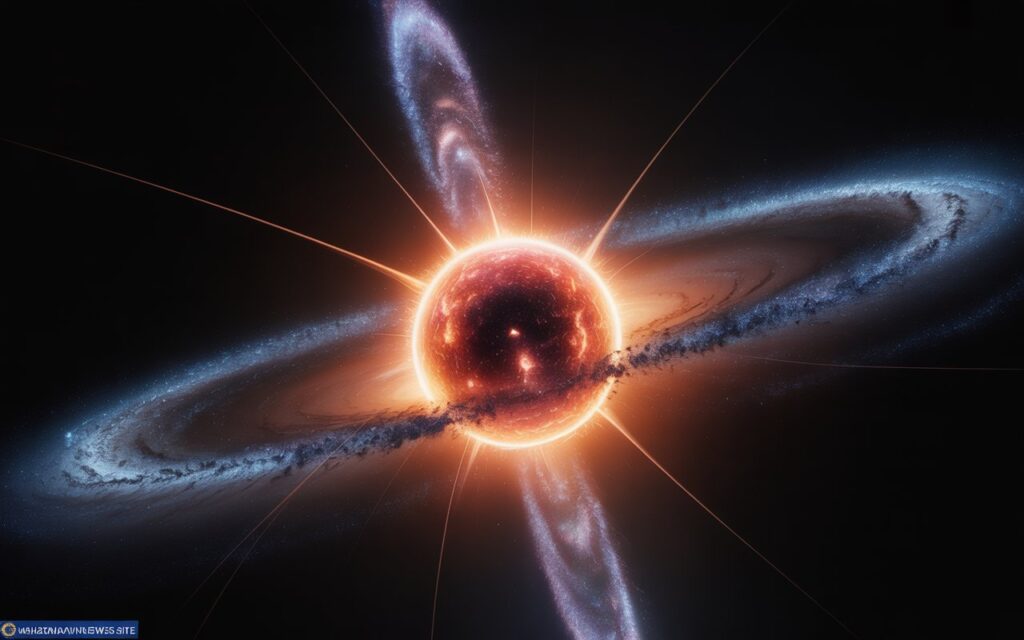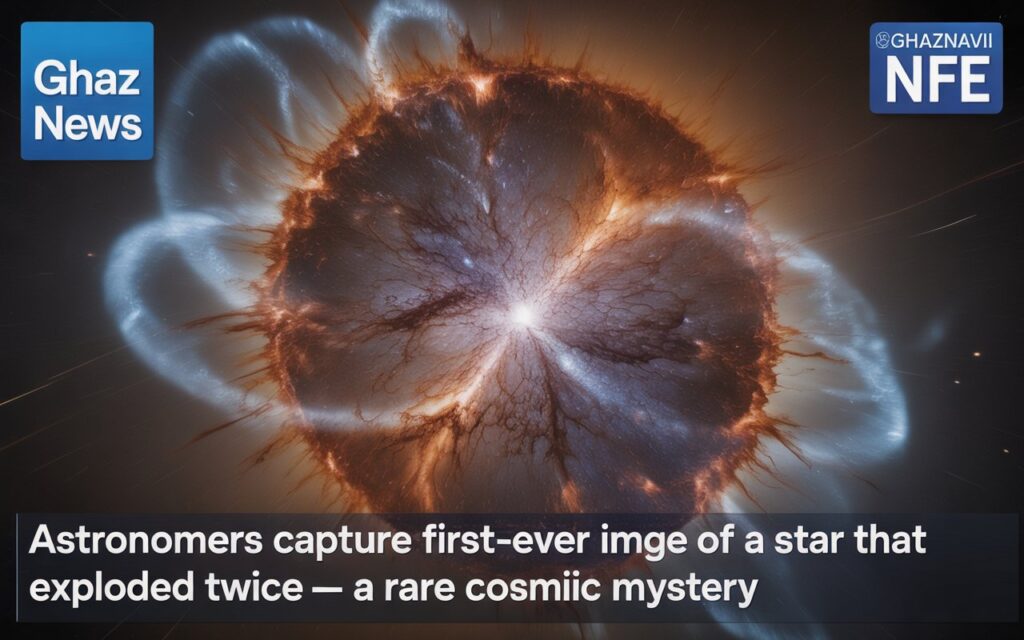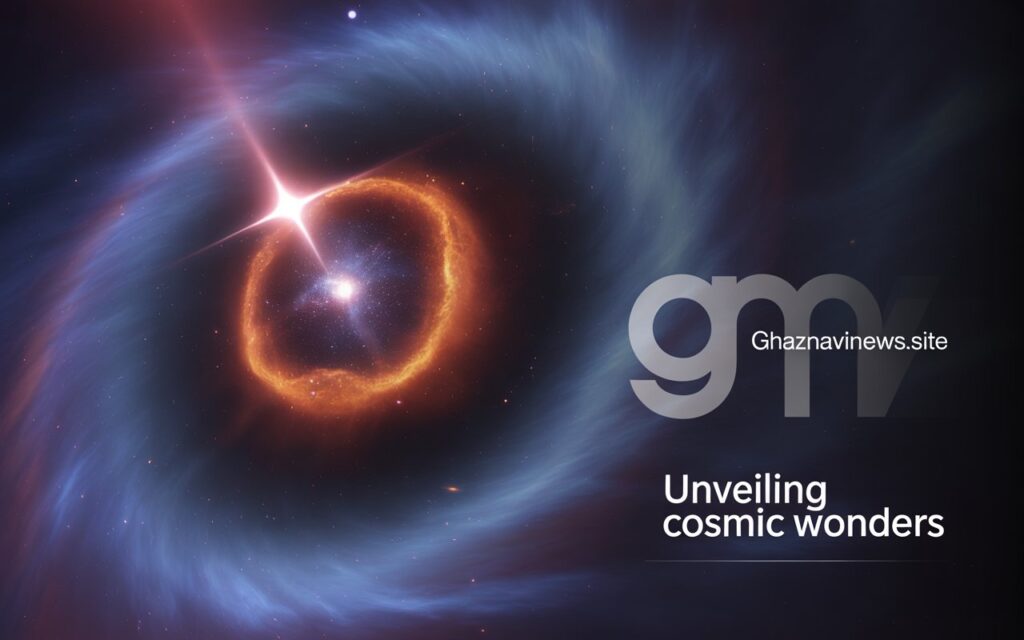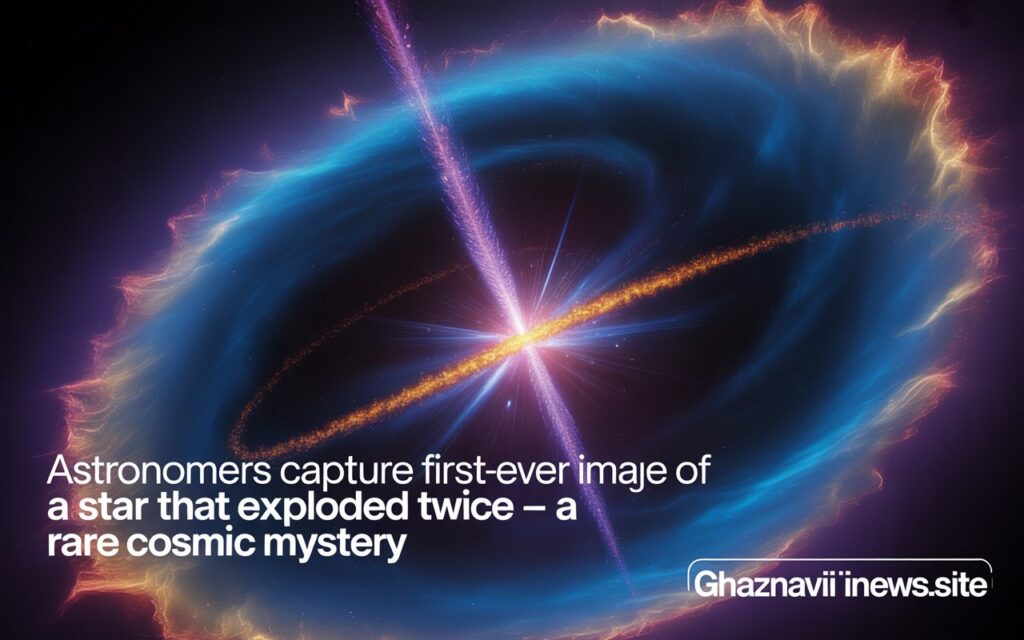
Astronomers Capture First-Ever Image of a Star That Exploded Twice — A Rare Cosmic Mystery
In a stunning astronomical breakthrough, scientists have captured the first-ever image of a dead star that exploded not once, but twice — an incredibly rare event known as a “double detonation.” This visual evidence provides long-sought answers to cosmic mysteries and opens new doors to understanding how some stars die.

Astronomers using the Very Large Telescope (VLT) and its advanced MUSE (Multi Unit Spectroscopic Explorer) instrument focused on the centuries-old remains of Supernova SNR 0509-67.5, located roughly 60,000 light-years away in the Dorado constellation. What they found shook the foundation of stellar physics — structural clues indicating a dual explosion from a white dwarf Dead Star.
White dwarfs are dense stellar remnants formed when stars like our Sun exhaust their nuclear fuel. Under normal conditions, such stars fade away silently. But in some extreme cases, they explode into supernovae — violent stellar deaths that light up the universe.
Dead Star

A Double Death or Dead Star: What Makes It So Unusual?
This particular white dwarf appears to have exploded in two phases, a phenomenon previously hypothesized but never seen. The discovery suggests that a white dwarf doesn’t always need to reach the Chandrasekhar limit — the critical mass traditionally required to trigger a supernova — to go out with a bang.
Dead Star
Instead, a buildup of helium on the Star surface may have sparked an initial detonation, which then triggered a second, more massive internal explosion. This domino effect is now being called a “double detonation,” and the visuals captured from the VLT provide solid observational evidence.

Why It Matters in Modern Astronomy
Type Ia supernovae, like the one from this white dwarf, are crucial tools for astronomers. Their consistent brightness allows scientists to measure vast cosmic distances, earning them the nickname “standard candles.” Yet, how exactly these explosions are ignited has remained a mystery — until now.
“This double-explosion signature gives us a new understanding of how white dwarfs can ignite,” said Dr. Prem Das, lead researcher from the University of New South Wales. “For decades, we have debated whether a surface helium layer could trigger a detonation. This image is like catching lightning in a bottle — proof that it’s not just a theory.”
May be You Like This
- US Forces Conduct Rare Raid on Cargo Ship Carrying Military Materials from China to Iran
- Trump Administration Launches Historic Pax Silica Alliance to Challenge China’s Rare Earth and Technology Dominance
- South East England Receives £133 Million Boost for Cycling, Walking and Wheeling Infrastructure
- The Hidden Billionaire Village: Inside Cashiers North Carolina’s Wealthy Enclave
- Medway Maritime Hospital A&E Safety Concerns: CQC Report Reveals Mixed Results
A Visual Breakthrough and Scientific Milestone
The high-resolution imaging shows asymmetrical debris patterns and shockwaves consistent with two separate blast phases. This finding not only adds to the growing body of stellar death research but could also refine how we model the expansion of the universe. Dead Star

“This breakthrough helps solve a decades-long puzzle about the life cycle of stars,” Dr. Das added. “It’s a rare look into one of the universe’s most dramatic endings.”
Table of Contents
What is a white dwarf star?
A white dwarf is the collapsed core of a low- to medium-mass star, like our Sun, after it has used up its nuclear fuel.
What makes a double explosion significant?
Double explosions challenge previous models by showing that stars can go supernova even without reaching the critical Chandrasekhar mass, via helium detonation.
Why are Type Ia supernovae important?
These supernovae are used as cosmic measuring tools due to their uniform brightness, helping astronomers gauge distances in the universe.










[…] Read More News […]